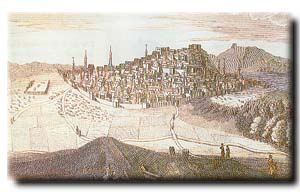
| The region's history goes back to the Bronze Age, Hatti Civilization, which was succeeded in the 2nd millennium BC by the Hittites, then the Phrygians (10th century BC); Lydians and Persians followed. After these came the Galatians, a Celtic race who were the first to make Ankara their capital (3rd century BC). It was then known as Ancyra, meaning anchor. The town subsequently fell to the Romans, Byzantines, and Selcuks under Alpaslan in 1073, and then to the Ottomans under Yildirim Beyazit in 1402, who remained in control until the First World War. |  |
 |
The town, once an important trading center on the caravan route to the east, had declined in importance by the nineteenth century. It became an important center again when Kemal Atatürk chose it as the base from which to direct the War of Liberation. In consequence of its role in the war and its strategic position, it was declared the capital of the new Turkish Republic on the 13th October,1923. |
| The oldest parts of the city surround the ancient hisar or citadel. Within the walls, the 12th century Alaeddin Mosque although much rebuilt by the Ottomans, still boasts fine Seljuk woodwork. Many interesting aditional Turkish houses have been restored in the area, and some have found new life as art galleries or attractive restaurants serving local dishes and wine. |  |
 |
The beautiful Ankara castle restaurant offers excellent local and international cuisine and WINE. It's well-known that Ankara was the cradle of "vine" (Hatti and Hittite) by 2000 B.C. Many vineyards around Ankara sponsor wine-tasting socials. Close to the gate, Hisar Kapisi, the beautifully restored bedestan (covered bazaar), houses the Museum of Anatolian Civilizations with its priceless collection of Paleolithic, Neolithic, Hatti, Hittite, Phrygian, Urartian and Roman artifacts, and the showpiece Lydian treasure. |